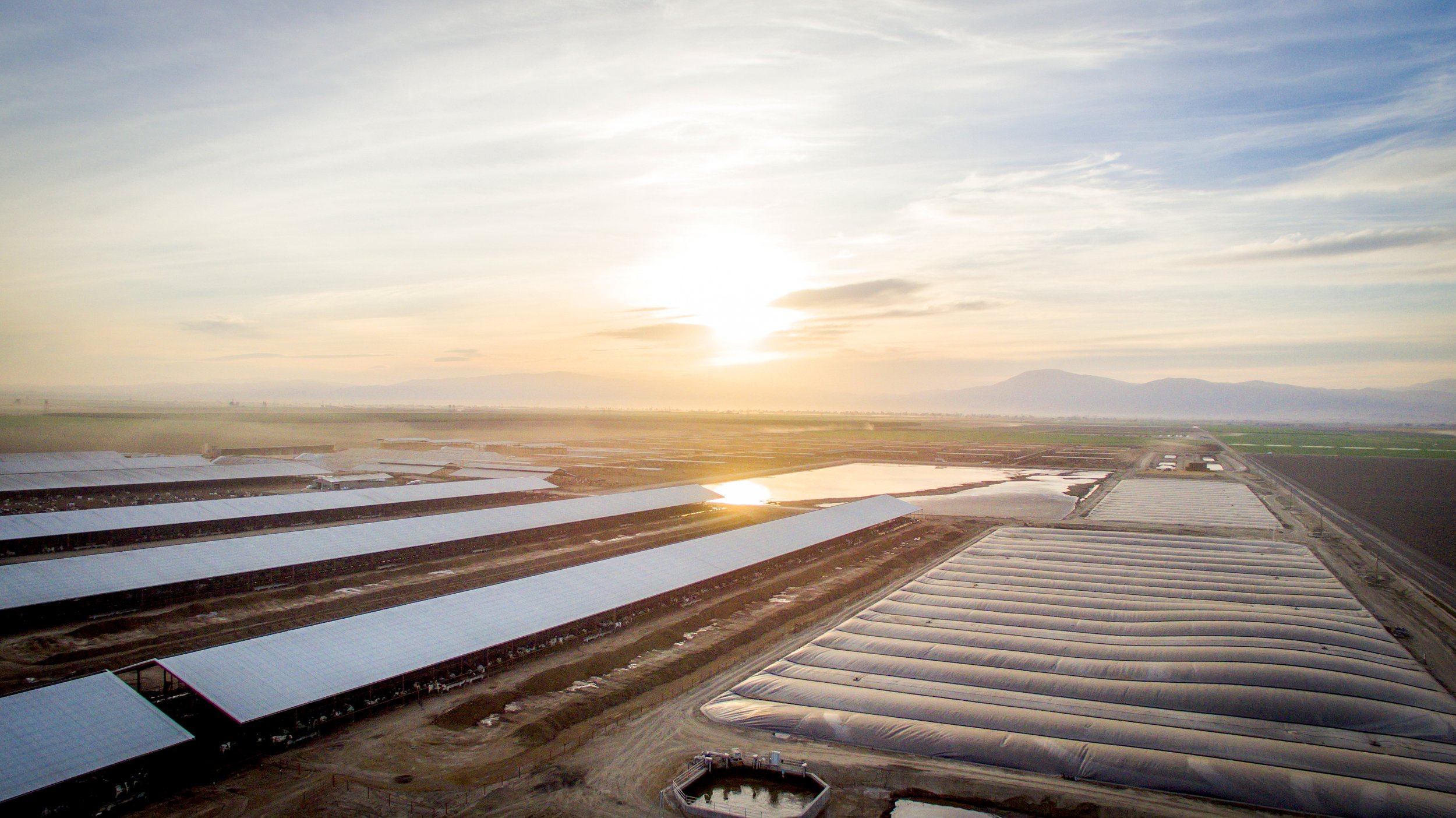
Dairy & Livestock
METHANE REDUCTION
Climate experts, including the U.N. Intergovernmental Panel on Climate Change (IPCC), have been clear that reducing methane is the best and fastest strategy for slowing global warming.
California dairy farmers are doing their part and are taking innovative action.
By investing and implementing strategies such as digesters and alternative manure management projects they are on course to meet the state’s 40% manure methane reduction goal by 2030* already achieving nearly all of the reductions needed.
*Established by Senate Bill 1383 (Lara, 2016)
In partnership with the state, more than $2 billion has been invested in 140 digesters and 170 alternative manure management projects.
These methane reduction efforts continue to be highly effective.
2022 California Climate Investments Annual Report
According to the annual California Climate Investments report, the Dairy Digester Research and Development Program (DDRDP) alone is achieving more GHG (CO2e) reductions than any other climate investment, achieving 29% of total GHG reductions while being allocated just 2.1% of the funds implemented to date.
At a cost of just nine dollars ($9) per ton of CO2e reduced, the DDRDP is California’s most cost-effective investment in the fight against climate change.
A recent California Department of Food and Agriculture report estimates the cumulative reduction from the dairy digester program as 21.12 million metric tons (MMTCO2e) over 10 years or 2.11 MMTCO2e annually. In addition, the Alternative Manure Management Program is reducing an estimated 2 MMTCO2e.
Projects result in significant air, water quality, and nuisance (odor) benefits to local communities.
The impact of these efforts cannot be overstated.
Methane’s enormous potential as a mitigation opportunity is its short-lived nature, lasting just 10-12 years in the atmosphere before breaking down. That means stabilizing existing methane emissions quickly—and further reducing methane concentrations in the atmosphere—will most effectively help the world meet its 2050 targets for fighting global warming.
By contrast, carbon dioxide—the most abundant GHG emission—stays in the atmosphere for hundreds of years. So, while it remains critical to continue reducing CO2, seeking reductions in methane is important to slow warming in the short term.
But the work is not done.
Both the DDRDP and the Alternative Manure Management Program (AMMP) are oversubscribed, documenting the need for additional funds. The California Air Resources Board’s Analysis of Progress toward Achieving the 2030 Dairy and Livestock Sector Methane Emissions Target confirms the need for additional incentives and grant funding.
California cannot and will not achieve its methane and overall GHG reductions without additional investments in dairy digesters.

See Climate-Smart Agriculture in Action
Dairy Delivers: Meeting California’s Climate Goals



